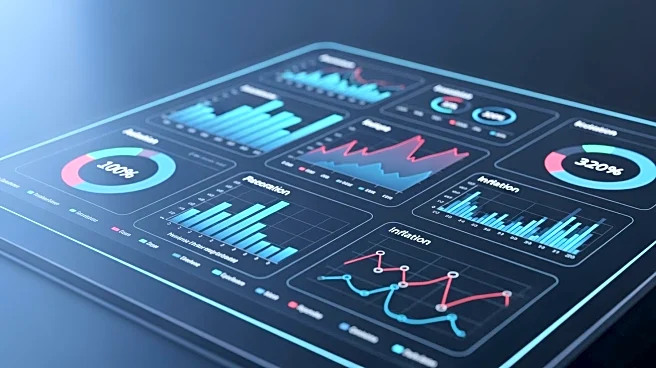What's Happening?
The inflation rate in the United States remains steady at 3% as of September 2025, according to the Bureau of Labor Statistics. This rate reflects the year-over-year change in the Consumer Price Index
(CPI), which measures the price fluctuations of a 'basket of goods and services' representing about 90% of the U.S. population. The CPI tracks both headline and core inflation, with headline inflation including volatile categories like food and energy, while core inflation excludes them for a clearer picture of long-term trends. The current inflation rate indicates a moderate increase in prices, with specific categories such as motor vehicle maintenance and repair seeing significant price hikes.
Why It's Important?
Inflation impacts the cost of living and purchasing power, influencing economic decisions for consumers and businesses. A stable inflation rate can signal economic stability, encouraging investment and spending. However, fluctuations in inflation can affect interest rates, borrowing costs, and wage negotiations. The current rate of 3% suggests a balanced economic environment, but variations in specific categories like food and energy can lead to differing impacts across sectors. Understanding these trends is crucial for policymakers and economic stakeholders to manage inflation effectively.
What's Next?
The Bureau of Labor Statistics will continue to monitor inflation trends, providing updates on changes in the CPI. Policymakers may adjust monetary policies to manage inflation and ensure economic stability. Businesses and consumers will need to adapt to these changes, potentially altering spending and investment strategies. The ongoing analysis of inflation data will help identify areas of concern and guide economic policy decisions.
Beyond the Headlines
Inflation has broader implications for economic planning and social welfare. Persistent inflation can lead to increased interest rates, affecting borrowing costs and investment strategies. It also influences wage negotiations and can impact income distribution, potentially leading to social and economic disparities. Understanding these dynamics is essential for developing effective economic policies and ensuring equitable growth.












